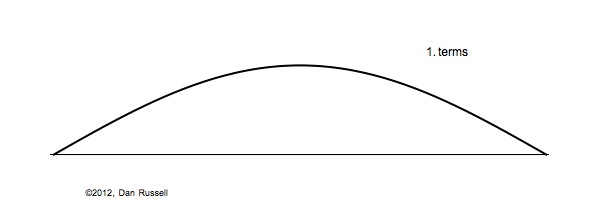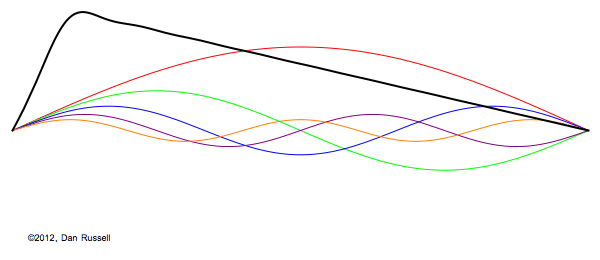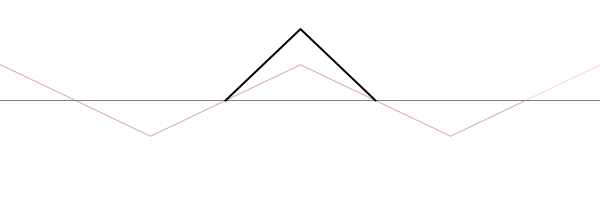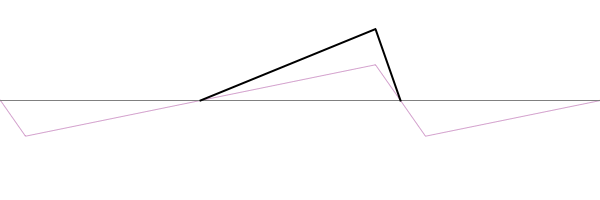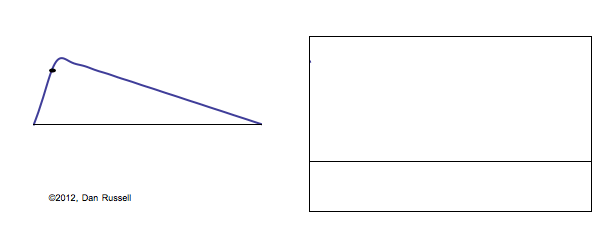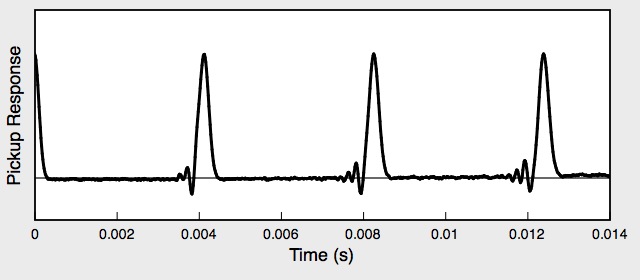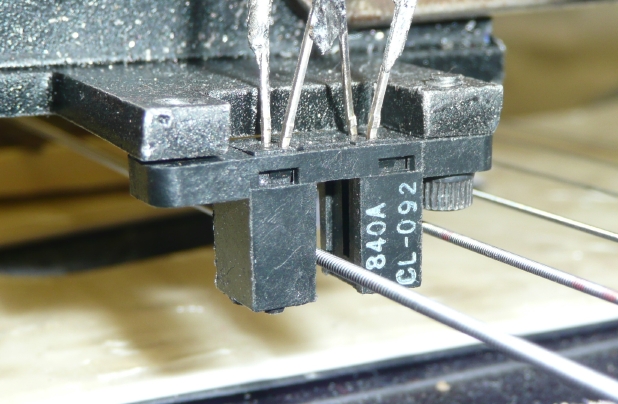The Plucked Fixed-Fixed String
When solving the problem of a plucked string, fixed at both ends, there are two types of conditions which must be considered. The Boundary Conditions (ie, the values of displacement, velocity, and force at the each end of the string) determine the possible allowed mode shapes with which the string may vibrate at one of its natural frequencies. The Initial Conditions (the initial displacement and velocity of the entire string at time \(t=0\)) determine which of the possible allowed mode shapes actually participate in the ensuing motion, and with what amplitudes.
For a string which is fixed at both ends, the boundary conditions at each end require that the displacement of the string must always be zero. This results in mode shapes for which the transverse displacement at any point along the string depends on a sine function, $$ \sin\Big(\frac{n\pi}{L}x\Big)\ , $$ where \(L\) is the length of the string, and \(n\) is an integer. The animation below shows the first four allowed mode shapes for a fixed-fixed string. The number of "humps" (antinodes) corresponds to the value of \(n\).

After applying the boundary conditions, the complete expression for the transverse displacement of the string, as a function of time and postion along the string's length, is $$ y(x,t) = \sum_{n=1}^N \big [A_n\cos(\omega_n t) + B_n\sin(\omega_n t)\big ] \sin\Big(\frac{n\pi}{L}x\Big) $$ where \(\omega_n\) is the natural frequency of the \(n\)th mode, and the coefficients \(A_n\) and \(B_n\) are determined from the initial conditions.
The string has a linear density \(\rho_L\) [kg/m] and is stretched to a tension \(T\); transverse waves travel along the string with a speed \(c=\sqrt{T/\rho_L}\). The natural frequencies corresponding to the allowed mode shapes depend on the wave speed and the string length, $$ \omega_n = 2\pi\, \frac{n c}{2 L} \ .$$ The natural frequencies will be higher if the string is shorter, or if the tension is higher, or if the density is lower. The natural (or allowed) frequencies are integer multiples of the fundamental (\(n=1\)) frequency.


